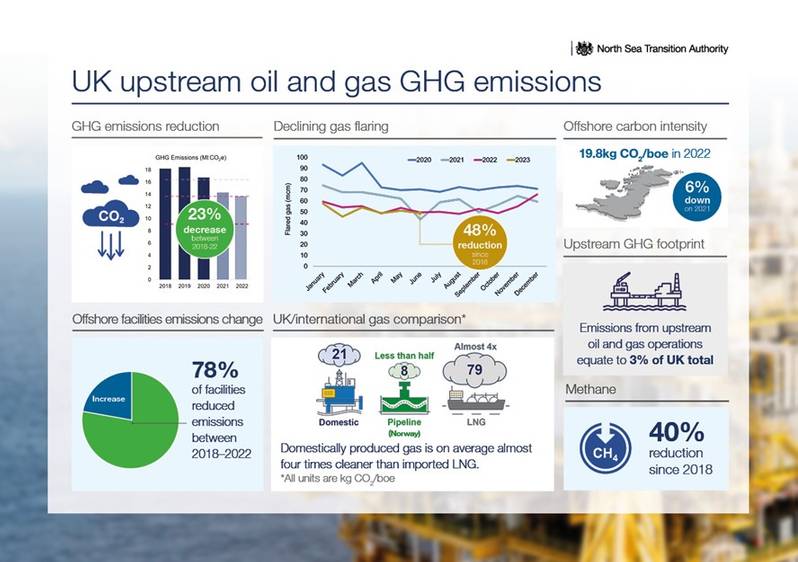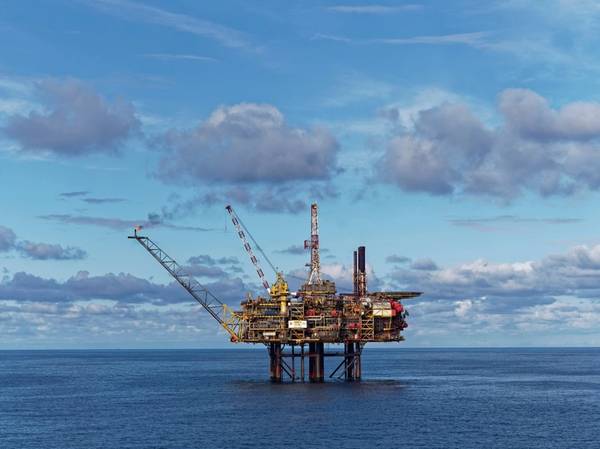Greenhouse gas emissions from UK offshore oil and gas production were cut for the third consecutive year in 2022, the UK North Sea Transition Authority said Tuesday.
"Last year’s estimated 3% reduction contributed to a 23% drop in greenhouse gas emissions between 2018 and 2022," NSTA said.
According to the NSTA, the UK offshore oil and gas industry remains "well on track" to meet targets to cut emissions 10% by 2025 and 25% by 2027, as agreed in the North Sea Transition Deal (NSTD) with the UK government in March 2021.
However, the NSTA said, bold measures will be required to hit the key target of halving emissions by 2030 – the absolute minimum the NSTA expects from industry, which must strive to surpass this goal.
The NSTA said it had warned in 2022 that unless the industry took positive steps, a likely rise in oil and gas production in 2022 would cause emissions to remain flat or temporarily rise.
Investment in Technology
However, the NSTA said Tuesday, industry investment in technologies that minimize flaring and fuel-efficiency initiatives meant emissions continued to fall, despite higher production than in 2021.
"For example, an operator replaced components in a gas export compressor, lowering fuel consumption by 18 tonnes per day and saving 20,000 tonnes of CO2e of emissions per annum. Emissions decreased on 78% of offshore facilities between 2018 and 2022, in some cases through permanent shutdowns, but for 59% of those, through active emissions reduction initiatives," the NSTA said.
These measures not only support the UK’s net zero goals – they also bolster energy security by saving gas that can be used to keep lights on, homes heated and businesses running, the NSTA said.
Although industry is making progress, there is more work to do. The industry needs to preserve its social licence to operate and the NSTA estimates that without further, sustained action, the sector will not meet the 2030 target of halving emissions, the NSTA said.
Norwegian Gas Carbon Footprint Lower
"While the carbon footprint of UK gas is on average almost four times lower than imported LNG, it is more than twice as large as pipeline imports from Norway, whose basin is similar to the UK Continental Shelf. The low carbon intensity of Norwegian gas should act as a spur to further clean-up UK production," the NSTA said.
"The NSTA will continue to hold industry to account on emissions by monitoring, tracking and benchmarking operators’ performance, sharing best practice and pressing licensees for relentless progress on flaring reduction, fuel efficiency and platform electrification schemes," the NSTA said.
This is supported by the NSTA’s strategy, which was revised in 2021 to oblige industry to help the UK reach net zero by 2050. The NSTA subsequently began requiring operators to develop Emissions Reduction Action Plans for their facilities and issued tougher guidance stating all new developments should have no routine flaring and venting, with zero routine flaring across all North Sea platforms by 2030.
"The approach is proving to be effective, not only in emissions reductions achieved, but since early 2021, NSTA interventions have contributed to preventing the emission of 3 million tonnes of lifetime CO2 equivalent, the same as taking more than 1.5 million cars off the road for a year," the NSTA said.
Hedvig Ljungerud, NSTA Director of Strategy, said:"“There are some really positive findings to credit here including the year-on-year progress and active investment in new emissions reduction technology.
“However, we can’t hide from the fact that there is more work to do. The NSTA will steadfastly hold the sector to account on emissions, including its pledge to halve emissions by 2030, which is the absolute minimum we expect.”
 Credit: NSTA
Credit: NSTA

 来源:NSTA
来源:NSTA




